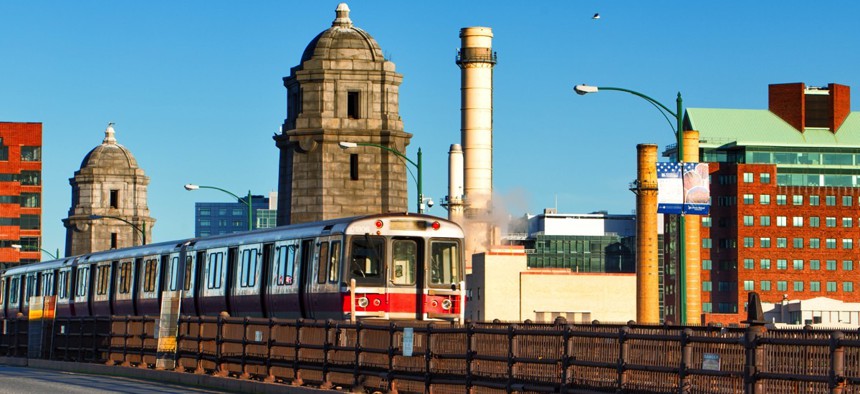Closing the ‘Last Mile' Gap With Uber and Lyft Continues to Gain Steam

Boston, Massachusetts
“We see it as building as many different modes to match the needs of our customers as possible,” according to the MBTA’s transportation innovation director.
The Massachusetts Bay Transportation Authority has been running a pilot program supplementing paratransit services in the Boston area with Uber and Lyft rides to boost efficiency and save money.
Through THE RIDE, as the MBTA’s paratransit service is called, customers call a day in advance to book their trip and schedule pickup.
Looking to improve the experience via alternate, lower-cost providers, the city wrapped up negotiations with Uber and Lyft about six months ago. Users receive the same-day service as every other rider, most having smartphones to hail them in a few minutes.
All they have to do is choose which of the two transportation network companies they prefer and sign up online, though the pilot is at its 400-person limit and currently has a waitlist.
“That’s to make 100 percent sure we’ve worked out the customer service bugs and kinks and we’re providing the best possible experience at minimal, if not cost neutral, cost—trending toward cost savings,” the MBTA’s transportation innovation director, Ben Schutzman, told Route Fifty in an interview.
Uber and Lyft then verifies customer eligibility with MBTA, which keeps that data.
Customers are responsible for a ride’s first $2, a copayment, and MBTA subsidizes the next $13 with the rider paying any remainder. The payment scheme is the result of MBTA studying pre-existing taxi subsidy programs, as well as how far $15 can take you and to what services around Boston.
Through the pilot program, the agency has witnessed people who once spent hours traveling to and from work or other destinations find transportation that better suits their lifestyle in ridesharing. Customers are making 30 percent more trips at 2 percent less cost.
Because it’s still in its pilot phase, tweaks are being made to optimize service, and the traditional paratransit service remains a valuable, sought after transit option—albeit on looser deadlines.
“We see it as building as many different modes to match the needs of our customers as possible,” Schutzman said. “So we’re building up a menu of services.”
Promoting other mobility options beyond single-occupancy vehicles reduces urban traffic congestion and frees up parking, and partnering with ride-hailing services is one good way to do that, said Matt Darst, vice president of parking and mobility solutions at Conduent, a business process services company that grew out of Xerox.
Darst pointed to a number of successful pilots around the U.S. as other examples.
Route Fifty has previously reported on Centennial, Colorado, just south of Denver, subsidizing the commutes of patrons living or working within a 1-mile radius of the city by having Lyft and taxis cover their fares to transit stops.
In the Tampa-St. Petersburg metropolitan area in Florida, the Pinellas Suncoast Transit Agency recently expanded a pilot with Uber, United Taxi and Wheelchair Transport taking people from bus stops to their final destinations for about $1, reported the Tampa Bay Times. Initially Direct Connect was only available in East Lake and Pinellas Park in Pinellas County for a higher $5 subsidy.
Elsewhere in Florida, Altamonte Springs outside Orlando offers the “broadest” last-mile effort Darst has seen, subsidizing 20 percent of the cost of an Uber ride anywhere within city limits. The trip doesn’t have to be to or from a SunRail commuter station.
Then there’s the Southeastern Pennsylvania Transportation Authority in the Philadelphia area with its own 14-week Uber pilot. The ride-hailing company has played savior to the struggling commuter rail system while 120 cars, a third of SEPTA’s fleet, are out of commission due to cracks in their weight-bearing beams, reported Philly.com.
Uber is offering 40 percent discounts on rides to and from SEPTA’s 11 regional rail stations.
Dave Nyczepir is a News Editor at Government Executive’s Route Fifty and is based in Washington D.C.
NEXT STORY: Bolstering the Bay Area Against Climate Change Impacts






